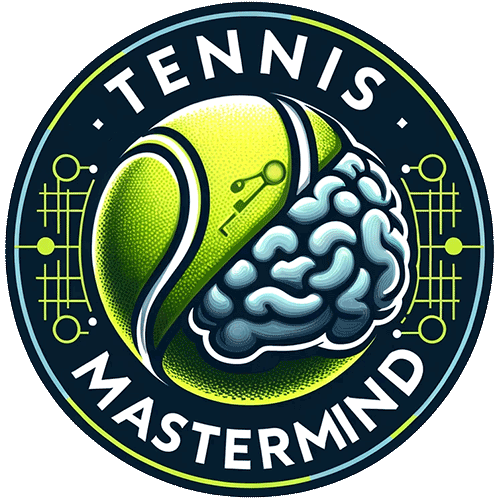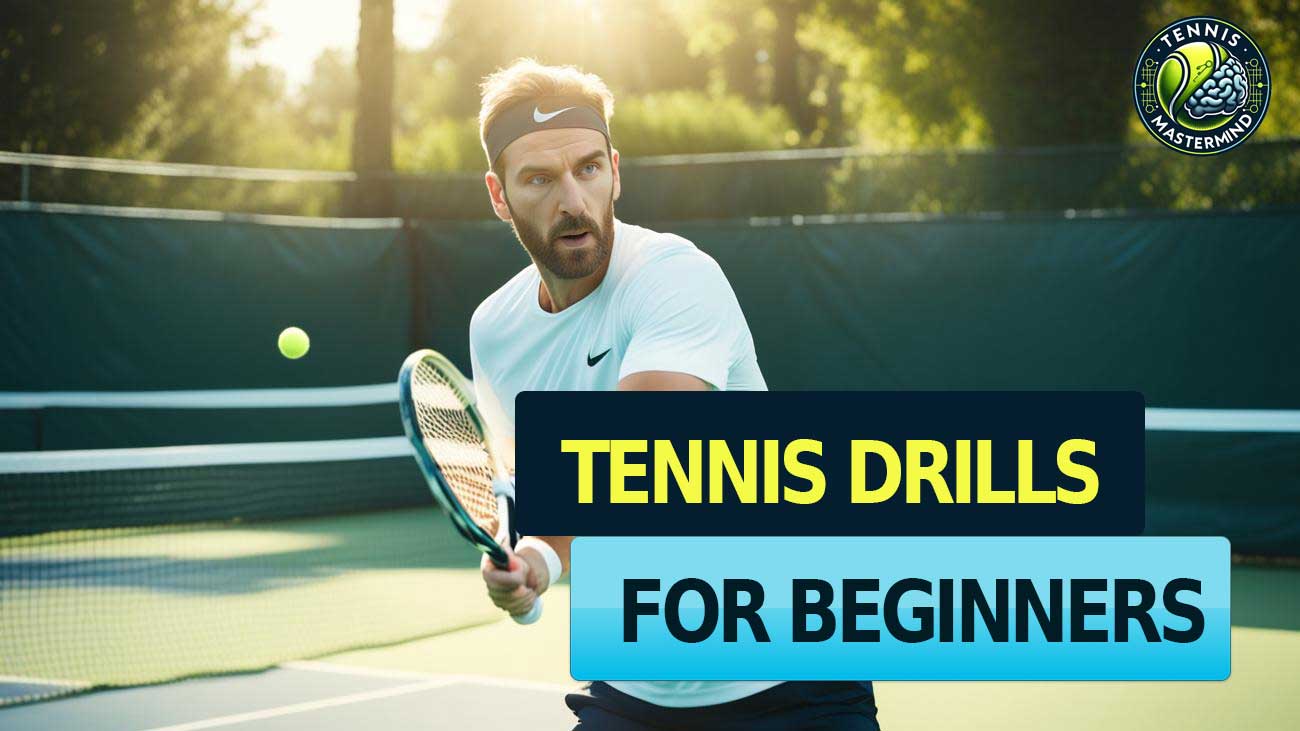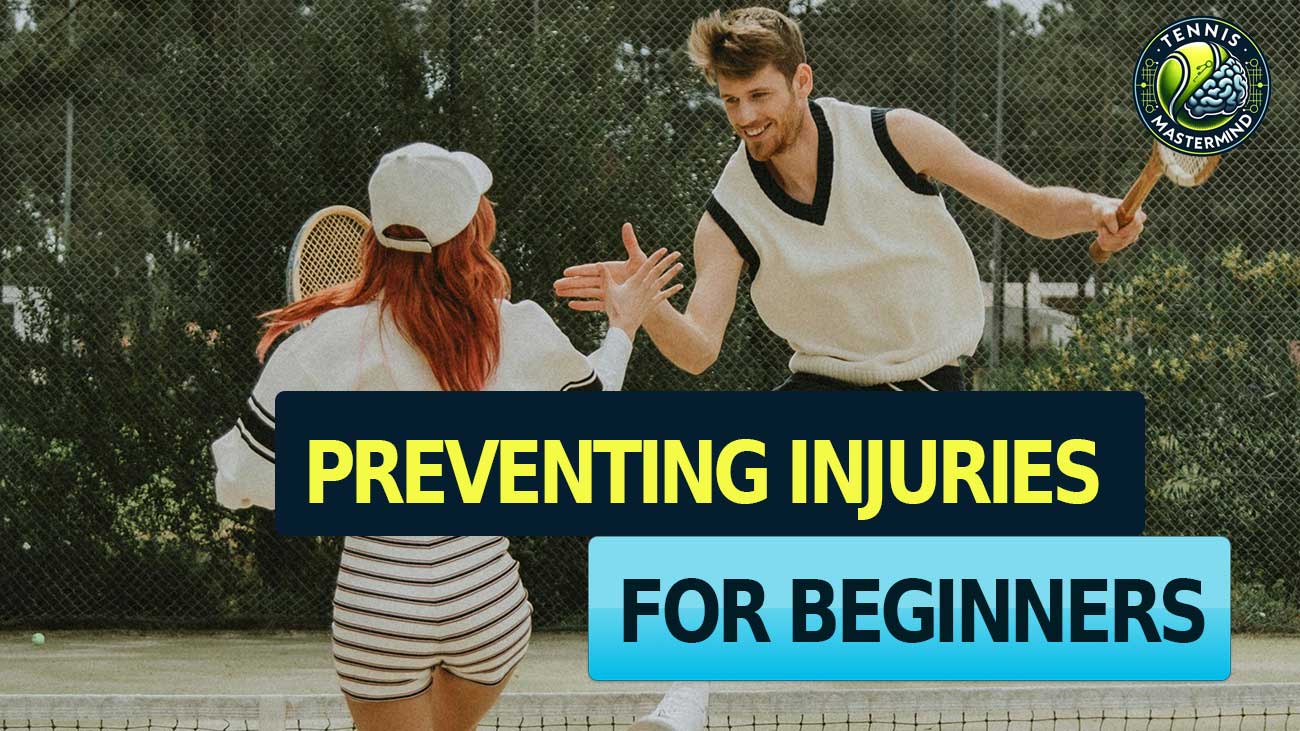If you’re just getting started with tennis, drills can be a great way to learn the fundamentals, develop proper technique, improve consistency, build confidence, and accelerate learning. In this article, we will provide a comprehensive guide to essential tennis drills for beginners. These drills will cover various aspects of the game, from running the lines to serving accuracy, and will help beginners develop their skills and technique.
Key Takeaways:
- Practice drills are essential for beginner tennis training.
- Tennis drills help improve technique, consistency, and confidence.
- Developing proper fundamentals is crucial for beginners in tennis.
- Regular practice and varied drills enhance learning and performance.
- Have fun while learning and mastering the basics of tennis.
Running the Lines
Running the lines is a fundamental warm-up drill that helps beginners get their blood flowing and familiarize themselves with the tennis court. It’s an excellent way to start a tennis practice routine and prepare the body for the upcoming exercises.
This drill serves multiple purposes for beginner tennis players. Firstly, it introduces them to the different lines on the court, helping them understand the layout and dimensions of the playing area. This knowledge is crucial for improving court awareness and positioning during a match.
To perform the running the lines drill, beginners simply run along the lines of the court. They can start by jogging lightly and gradually increase their speed. It’s important to maintain good form and stay focused on their footwork throughout the drill.
TIP: To make this drill more engaging and challenging, beginners can incorporate variations such as side shuffles, high knees, butt kicks, or quick sprints along the lines.
Running the lines is an essential exercise for building endurance, agility, and speed on the tennis court. It also serves as a dynamic warm-up activity that increases blood flow and stretches the muscles, preparing the body for the demands of tennis practice.
The Frying Pan
The Frying Pan drill is a great way for beginners to develop their tennis technique and improve their hand-eye coordination. In this drill, we will hold our rackets like frying pans and use them to bounce a ball on the strings. This exercise helps us familiarize ourselves with the feel of the racket and improve our coordination and touch.
To perform the Frying Pan drill, follow these steps:
- Stand in a comfortable position on the tennis court.
- Hold your racket with a loose grip, as if you were holding a frying pan.
- Toss a tennis ball lightly in front of you.
- Allow the ball to bounce once, then use your racket to gently bounce it back.
- Continue bouncing the ball on the strings, focusing on keeping a consistent rhythm.
- Try to maintain control and accuracy as you bounce the ball.
- As you become more comfortable, increase the difficulty by bouncing the ball higher or faster.
Remember, the aim of this drill is to improve your hand-eye coordination and get a feel for the racket. Have fun with it and challenge yourself to improve your coordination and touch.
Benefits of the Frying Pan Drill:
- Improves hand-eye coordination
- Enhances feel and touch with the racket
- Helps develop a gentle touch and control
- Builds confidence with the racket
“The Frying Pan drill is a fun and engaging way for beginners to improve their hand-eye coordination and familiarize themselves with the feel of their racket.”
Incorporating the Frying Pan drill into your tennis practice routine can greatly benefit your overall development as a player. It’s a simple, yet effective drill that allows you to focus on essential skills while enjoying the game. Give it a try and see the improvement in your technique!
The Dribble
The Dribble drill is a simple yet effective drill for beginners to develop their hand-eye coordination and ball control. In this drill, beginners will drop a ball in front of themselves and hit it with their racket toward the ground. They will aim to maintain a consistent dribble by keeping the ball bouncing on their racket. This drill can be modified to increase the speed and challenge beginners to focus on their timing and control.
Why is the Dribble drill important for beginner tennis training?
The Dribble drill is an essential part of tennis practice routines for new players. It helps beginners develop crucial skills such as hand-eye coordination and ball control. By repeatedly hitting the ball with their racket, beginners learn how to establish a rhythm and maintain consistent dribbling. This drill also improves timing and control, which are vital for executing accurate shots during a tennis match.
“The Dribble drill is a great way for beginners to build their confidence and familiarity with the ball. By mastering this basic skill, they will have a solid foundation to progress and excel in their tennis journey.” – Coach Sarah
By practicing the Dribble drill regularly, beginners can enhance their overall tennis performance. They can gradually increase the speed of the drill to challenge themselves and improve their reaction time. Additionally, this drill sets the groundwork for more advanced techniques such as volleys and overheads, as it trains players to control the ball with precision.
Tips for maximizing the benefits of the Dribble drill:
- Start with a soft ball to develop a feel for dribbling
- Focus on hitting the ball with a light touch to maintain a consistent bounce
- Progressively increase the speed of your dribble to improve reaction time
- Experiment with different variations of the drill, such as alternating hands
- Practice in different environments, such as on various court surfaces, to adapt to different playing conditions
The Dribble drill is an essential component of tennis practice routines for beginners. By mastering this fundamental skill, beginners can develop better hand-eye coordination, ball control, and rhythm. Practice this drill regularly and incorporate different variations to challenge yourself and improve your timing and control. With consistent practice and dedication, you’ll be well on your way to becoming a skilled tennis player.
Simple Groundstrokes
Simple Groundstrokes is a foundational drill for beginners looking to develop their tennis technique. This drill focuses on practicing both forehand and backhand groundstrokes, which are essential shots in the game. By mastering these strokes, beginners can improve their consistency, power, and accuracy on the court.
To perform this drill, beginners will stand at the center of the service line while the coach or instructor tosses balls towards them. The objective is to hit the ball back over the net, focusing on maintaining proper form and technique throughout each stroke. This drill helps beginners build confidence in their groundstrokes and develop a consistent swing.
During the drill, beginners should pay attention to their grip, footwork, and body positioning. The correct grip is crucial to generating power and control in the shots. Additionally, maintaining a balanced stance and using proper footwork techniques, such as the split step, can contribute to better shot execution.
Remember, practice makes perfect. It’s important for beginners to dedicate consistent time to practicing their groundstrokes. By repeating this drill regularly, new players can develop the muscle memory and coordination necessary to perform accurate and powerful shots in a match situation.

| Benefits of Simple Groundstrokes Drill |
|---|
| 1. Helps beginners develop proper form and technique in forehand and backhand groundstrokes. |
| 2. Builds confidence and consistency in hitting groundstrokes. |
| 3. Improves footwork, grip, and body positioning for better shot execution. |
| 4. Enhances muscle memory and coordination required for match play. |
Ball Toss Groundstrokes
Our next drill, Ball Toss Groundstrokes, builds upon the skills learned in the Simple Groundstrokes drill while adding an extra challenge of judging ball speed and movement. This drill is perfect for beginners who want to enhance their timing, footwork, and shot selection.
To perform this drill, beginners will need a coach or practice partner to toss the ball towards them. The goal is to react quickly to the ball and hit a groundstroke with accuracy and control. By practicing this drill, beginners will develop their ability to read the ball and adjust their shot accordingly.
This drill is beneficial for improving timing, as beginners must time their swing properly to make effective contact with the ball. Additionally, it helps develop footwork, as players need to move into the right position to make a successful shot. Lastly, it enhances shot selection, as beginners have to decide whether to hit a forehand or backhand groundstroke based on the ball’s trajectory and positioning.
By incorporating Ball Toss Groundstrokes into their practice routine, beginners will gain confidence in their shot-making abilities and develop the skills necessary for more advanced tennis play.
Benefits of Ball Toss Groundstrokes:
- Improves timing and coordination
- Develops footwork and positioning
- Enhances shot selection skills
- Boosts confidence for more advanced gameplay
So, grab a practice partner and start honing your groundstrokes with Ball Toss Groundstrokes!
| Pros | Cons |
|---|---|
| Improves timing and coordination | Requires a practice partner or coach |
| Develops footwork and positioning | Needs a sufficient space for practice |
| Enhances shot selection skills | Requires a certain level of proficiency |
| Boosts confidence for more advanced gameplay | May take time to master |
Side to Side Groundstrokes
Side to Side Groundstrokes is a progression of the previous drills that focuses on lateral movement and shot placement. In this drill, beginners will move side to side as the coach hits balls to their forehand and backhand. The objective is to maintain proper footwork and technique while hitting accurate groundstrokes from different positions on the court. This drill helps beginners improve their agility, court coverage, and shot consistency.

Drill Instructions:
- Start at the center of the baseline, with your feet shoulder-width apart and knees slightly bent.
- As the coach hits the ball to your forehand side, step laterally with your left foot and execute a forehand groundstroke using proper technique.
- After hitting the forehand, quickly recover to the center position.
- As the coach hits the ball to your backhand side, step laterally with your right foot and execute a backhand groundstroke using proper technique.
- Continue moving side to side and hitting accurate groundstrokes, maintaining proper footwork, and using correct technique.
Remember, the key to success in this drill is to focus on quick lateral movement, maintaining a stable base, and hitting the ball with control and accuracy.
By practicing Side to Side Groundstrokes, beginners can improve their overall game performance by developing the necessary skills and consistency in shot placement. This drill also enhances their agility and court coverage, allowing them to handle different shots from various positions on the court. Incorporate this exercise into your training routine to take your tennis skills to the next level.
Conclusion
In conclusion, practicing drills is an essential part of the learning process for beginners in tennis. The practice drills for tennis beginners mentioned in this guide cover a range of tennis basics for beginners and provide beginner tennis drills and tips to help you develop a solid foundation in the sport.
By incorporating these drills into your training routine, you can improve your hand-eye coordination, refine your technique, enhance your footwork, and ultimately enhance your overall game performance. Remember to consistently practice these drills, stay focused, and most importantly, have fun while learning and mastering the fundamentals of tennis.
So, whether you’re a complete beginner or looking to reinforce your foundational skills, these drills will provide you with the necessary tools to progress in your tennis journey. Keep practicing, stay dedicated, and soon you’ll be confidently stepping onto the tennis court, ready to take on any challenge that comes your way.




